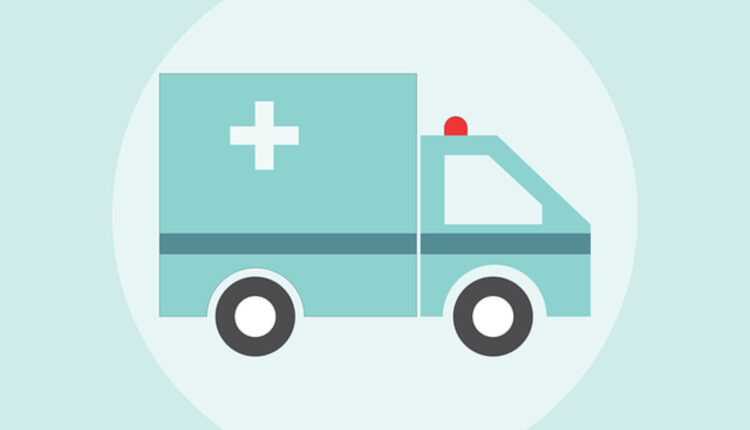In South Africa’s dynamic economic climate, managing operational costs and personal finances is a constant challenge for businesses and individuals alike. Among the significant expenditures, medical aid often stands out, representing a substantial line item in both corporate budgets and household accounts. While the imperative to provide comprehensive healthcare coverage for employees or secure personal health protection remains paramount, there are strategic approaches to optimize medical aid expenditure without compromising on essential benefits. This article, tailored for the discerning members of the business chamber, explores practical strategies for saving money on medical aid in South Africa, focusing on both individual and employer-led initiatives. The actual Interesting Info about best medical aid plans.
The Business Imperative: Maximizing Value from Employee Medical Aid
For businesses, offering medical aid is not just a perk; it’s a critical component of employee well-being, retention, and productivity. However, escalating healthcare costs can erode profitability. Smart businesses can implement several strategies to manage these costs effectively:
1. Strategic Plan Selection and Review
- Annual Review and Benchmarking: Don’t simply renew the existing plan. Conduct an annual review of your company’s medical aid scheme. Benchmark your current plan against market offerings to ensure competitiveness and value. Engage with medical aid brokers who specialize in corporate schemes; they can provide insights into industry trends and negotiate better terms.
- Tailored Options: Instead of a one-size-fits-all approach, consider offering a range of plan options to employees. This allows individuals to choose a plan that best fits their personal health needs and budget, potentially leading to higher satisfaction and more efficient utilization of benefits. For instance, younger, healthier employees might prefer a hospital plan with a medical savings account, while older employees or those with families might opt for comprehensive coverage.
- Network-Based Plans: Explore network-based options. These plans often come with lower premiums because they restrict members to a defined list of healthcare providers. If the network is extensive and includes quality providers accessible to your employees, this can be a significant cost-saving measure.
2. Promoting Wellness and Preventive Care
- Invest in Employee Wellness Programs: A healthier workforce leads to fewer claims and potentially lower premiums in the long run. Implement wellness initiatives such as health screenings, flu vaccinations, stress management workshops, and smoking cessation programs. Many medical aid schemes offer incentives or discounts for companies that actively promote employee wellness.
- Educate Employees on Benefit Utilization: Many employees are unaware of the full scope of their medical aid benefits, particularly preventative care benefits. Educate them on how to effectively use their medical aid for routine check-ups, screenings, and chronic disease management, which can prevent more costly interventions down the line.
3. Understanding Tax Implications and Group Scheme Benefits
- Tax Deductibility: For employers, contributions to approved medical aid schemes for employees are generally tax-deductible expenses, reducing the company’s taxable income. Understanding these tax benefits is crucial for financial planning.
- Group Scheme Advantages: Group schemes typically offer more favorable rates and terms compared to individual plans due to the larger risk pool. Leveraging the collective bargaining power of your employee base can result in significant savings.
The Individual’s Playbook: Smart Choices for Personal Medical Aid
For individuals, medical aid is a significant personal investment. Prudent management can lead to substantial savings without sacrificing essential healthcare access:
1. Right-Sizing Your Plan to Your Needs
- Assess Your Health Profile: Be honest about your health needs. If you are young and healthy with no chronic conditions, a basic hospital plan with a medical savings account might be more cost-effective than a comprehensive plan. Conversely, if you have ongoing health issues, skimping on a comprehensive plan could lead to higher out-of-pocket expenses.
- Consider Your Family Structure: Families often benefit from family-specific plans that offer better rates for multiple dependents. If you have young children, look for plans with robust paediatric benefits and maternity cover if planning to expand your family.
- Evaluate Day-to-Day Needs: If your day-to-day medical expenses (GP visits, acute medication) are low, a hospital plan combined with a medical savings account (MSA) allows you to manage these costs directly. Unused MSA funds typically roll over, providing a buffer for future years.
2. Leveraging Network Options and Designated Service Providers (DSPs)
- Embrace Networks: Many schemes offer network options where you commit to using a specific list of hospitals, doctors, and specialists. These plans are often significantly cheaper. Before joining, ensure the network includes providers convenient for you and your family.
- Utilize Designated Service Providers (DSPs): For Prescribed Minimum Benefits (PMBs), medical aid schemes can specify DSPs. If you use a non-DSP for a PMB, the scheme may impose a co-payment. Always check if your chosen provider is a DSP for your condition to avoid unexpected costs.
3. Understanding and Managing Out-of-Pocket Expenses
- Co-payments and Deductibles: Be aware of the co-payments and deductibles associated with your chosen plan. These are amounts you pay out-of-pocket for certain procedures or hospital admissions. Opting for a plan with higher co-payments can reduce your monthly premium, but ensure you can afford these costs when they arise.
- Gap Cover: This is a crucial, yet often overlooked, tool for saving money. Gap cover is a separate insurance product that covers the shortfall between what your medical aid pays and what private healthcare providers charge, especially for in-hospital procedures. Given that specialists often charge rates significantly higher than medical aid rates, gap cover can prevent substantial out-of-pocket expenses.
4. Smart Use of Medical Savings Accounts (MSAs)
- Budget Wisely: If you have an MSA, budget your day-to-day medical expenses carefully. Treat it like a separate bank account for healthcare. Avoid unnecessary spending to ensure funds are available for essential needs.
- Roll-over Benefits: Remember that unused MSA funds roll over to the next year, accumulating over time. This can be a significant advantage, providing a growing reserve for future medical needs.
5. Regular Review and Comparison
- Don’t Set and Forget: Your health needs and financial situation evolve, as do medical aid offerings. Make it a habit to review your medical aid plan annually. Compare it with other schemes and plans in the market. Independent comparison platforms and accredited brokers can be invaluable resources in this process.
By adopting these strategic approaches, both businesses and individuals in South Africa can navigate the complexities of medical aid, ensuring optimal healthcare coverage while exercising fiscal responsibility. Smart spending on medical aid is not about cutting corners; it’s about making informed choices that align with your needs and financial goals, ultimately contributing to a healthier bottom line and a healthier life.


